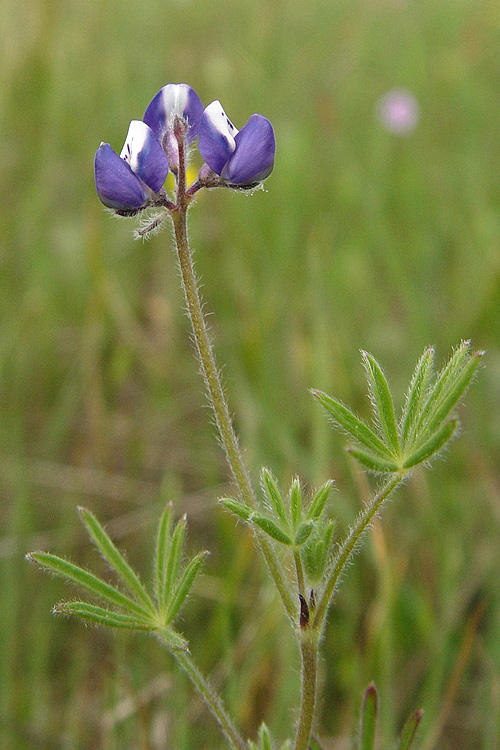Fun Facts
Scientifically, Lupinus means wolf (National Park Service). Since L. bicolor is known to grow in nutrient deficient soil, it was said to have taken the nutrients from the soil (SPLASH 2013). We know that the growth of this organism can, in fact, improve the nutrition and health of the surrounding soil.
Many Native American tribe used the L. bicolor for a variety of food sources and for medicinal purposes. The leaves were eaten as greens by the Luiseňo and the Yuki people after being roasted over a hot fire. The roots were often cooked, peeled and eaten after being roasted over a fire by the Haida, Tlingit and lower Chinook tribes (Evergreen College 2012), while the Owens Valley Paiute used the plant's leaves to treat bladder problems.
The oldest seeds found of the Lupine family were found in 1967 in a lemming burrow. These seeds were viable and are thought to be over 10,000 years old (Wildflower Center 2013).
Image 8. Photo used with permission from and taken by Carol Witham
In this partnership, we chose Lupinus bicolor as our topic of study because we didn't know anything about it to begin with. This organism was intriguing because of the floral shape and structure and the dispersal method for reprodution.
Go back to Interactions or continue to References.
